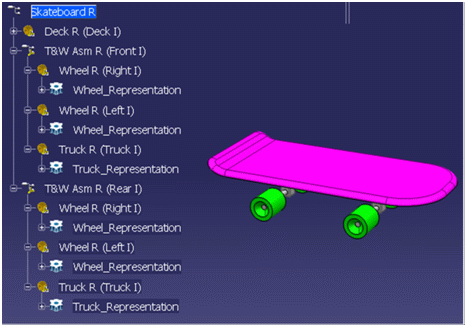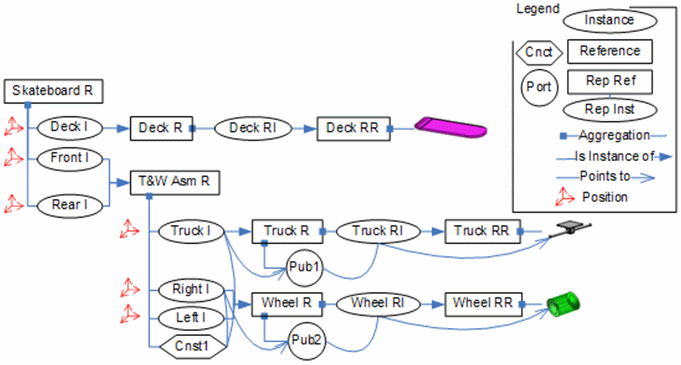About the V6 Data Model | ||
| ||
V6 VPM Data Model
VPM V6 data is stored in database in separate atomic objects with relations between them.
The core data model is based on six core objects and three core data model relationships.
The six core objects are:
- Reference
- Representation
- Instance
- Representation Instance
- Port
- Connection
The three core data model relationships are:
- Aggreation
- Is Intance Of
- Points To
![]()
Full Concurrent Engineering
The VPM V6 model allows full concurrent engineering which means that any object can be modified independently from the others.
A data model relationship can be added between objects without modifying them. This is true not only for connection relationships, but also for aggregation relationships.
The picture below shows a skateboard model made up of references, representations, instances and representations instances as well as relationships between these objects.

The corresponding data model is as follows:

The geometry contained in "Wheel_Representation" and the attributes of "Wheel R" can be modified by two different users at the same time. This means that modifying "Wheel_Representation" does not modify "Wheel R".
Instantiating "Deck R" below "Skateboard R" does not modify "Skateboard R".
![]()
PLM Features
All six core objects benefit from the ENOVIA mechanism and therefore contain the associated ENOVIA attributes.
These core objects have ownership attributes (user, project, organization) and, as any object, they have a creation date, a modification date and can be searched for and open independently from each other. In addition to this, security, P&O and lock capabilities are also available.
Regarding references and representations, the following attributes are available: maturity, version, and lifecycle.